


Project Ketch:
Project Plowshare in Pennsylvania
J.B. Krygier
Published in 1998 in Ecumene 5:3, pp. 311-322. A shorter version of this paper, "Spectacular Ideas in Marginal Landscapes," is available.
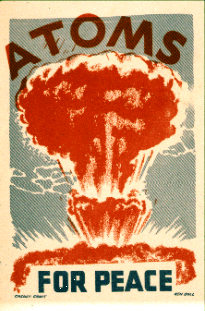 ABSTRACT:Project Ketch, part of the the Atomic Energy Commission's
(AEC) Plowshare initiative, proposed the detonation of a 24 kiloton atomic bomb
3300 feet underground in a State Forest in north-central Pennsylvania. The
resulting sub-surface cavity was to be used to store natural gas for distribution
in Pennsylvania and other north-eastern states. Proponents of Project Ketch, the
AEC and Columbia Gas Corporation, engaged the discourses of geographic
engineering (planetary-scale landscape modification with atomic explosives),
economic development, and marginality to justify the project, to enable the blast
to take place. Public debate disputed and resisted these discourses, recasting
the selected ground zero in different and sometimes contradictory ways, leading
to the cancellation of Project Ketch. This paper examines how a particular
"marginal" landscape was contentiously made and remade to suit different
intentions and motivations, focusing on the relations between the spectacular and
the marginal as they played out in a quiet woods in
Pennsylvania.
ABSTRACT:Project Ketch, part of the the Atomic Energy Commission's
(AEC) Plowshare initiative, proposed the detonation of a 24 kiloton atomic bomb
3300 feet underground in a State Forest in north-central Pennsylvania. The
resulting sub-surface cavity was to be used to store natural gas for distribution
in Pennsylvania and other north-eastern states. Proponents of Project Ketch, the
AEC and Columbia Gas Corporation, engaged the discourses of geographic
engineering (planetary-scale landscape modification with atomic explosives),
economic development, and marginality to justify the project, to enable the blast
to take place. Public debate disputed and resisted these discourses, recasting
the selected ground zero in different and sometimes contradictory ways, leading
to the cancellation of Project Ketch. This paper examines how a particular
"marginal" landscape was contentiously made and remade to suit different
intentions and motivations, focusing on the relations between the spectacular and
the marginal as they played out in a quiet woods in
Pennsylvania.
The spectacular here was the Atomic Energy Commission's Project Plowshare, an applied exercise in large-scale landscape and subsurface manipulation by means of nuclear explosives, part of the search for 'peaceful' uses of atomic energy.(note 3) The ideas behind Plowshare were 'engineer's dreams,' speculative discourses about nuclear modifications of the physical environment at a planetary scale. They drew upon a long cultural history of engineering reverie.(note 4) As with previous engineer's dreams, Plowshare was carefully constructed as a spectacle - a means of realizing the project and its entangled practical and political goals.(note 5) Conversely, the marginal was a landscape in north-central Pennsylvania where the blast was to take place (figure 1), and this too, in terms of both landscape and people, was also carefully constructed. In this case, it needed to be an empty landscape with few people, engaged in minimal economic activity, cast as a negative space, a forgotten periphery to some disinterested core, a hole in the map.

Figure 1) Map showing location of proposed Project Ketch site in Pennsylvania (map by J.B. Krygier).
In the case of Plowshare and its application in Project Ketch, as the Pennsylvania plan was called, the elaborately constructed spectacular and the systematically produced marginal were brought together by necessity. The strategy behind Ketch was shaped and implemented by the Atomic Energy Commission (AEC) together with the Columbia Gas Corporation, the latter interested in storing natural gas in chambers created by thousands of underground nuclear blasts in the north-eastern United States. Plowshare concepts, worked out in the private spaces of Atomic Energy Commission (AEC) laboratories in California and nuclear test sites in Nevada, needed to be transferred to and demonstrated in a public space in a particular landscape. The Pennsylvania location would allow the AEC to demonstrate the purported scientific and practical feasibility of Plowshare ideas. Importantly, such a location needed to be marginal: marginality of the place and its people was a necessary condition for Project Ketch to be realized. A discourse of economic development was significant for constructing marginality: a human and physical landscape could be made worthy of a nuclear blast by configuring the selected ground zero and its people as economically needy and socially underdeveloped. Marginality, therefore, must be produced before it can be utilized; a 'social mapping' of marginality needs to be engineered before the manipulation of physical space can be undertaken. Social mapping and actual mapping are inextricably interwoven in this story: official Pennsylvania state road maps from the 1960s show a distinctive 'hole' around the Ketch site. By choosing to map certain things, and not others, such 'holes,' and the speculative and imagined geographies which they can contain, are engendered.
The story of Project Ketch in Pennsylvania provides a means of examining the discourses of nuclear engineering, the marginal, and economic development as produced and applied to a particular landscape and people. The creation of a particular experimental space through a process of actual and social mapping facilitated the AEC's goals for Plowshare. The story of Project Ketch also reveals the process by which the social mapping of the AEC's experimental space in north-central Pennsylvania was contested, resisted, and breached. Once in the public sphere these discourses were not accepted uncritically. Focused on a landscape in north central Pennsylvania, they raised contentious debates in both image and word (figure 2). Local voices questioned and resisted official discourses, offering alternative discourses and different, sometimes contradictory mappings of the ground zero landscape. The demise of Ketch and eventually of Plowshare, their return to the spaces of engineer's dreams, find their origins in disputes focused on particular landscapes which necessarily had to be marginalized if the Plowshare experiments were to take place.
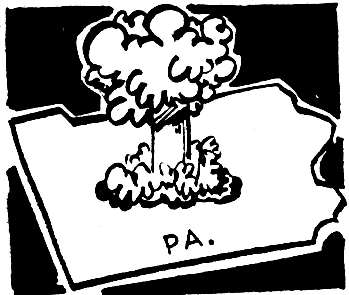
Figure 2) Illustration from letter to editor opposing Project Ketch (Pittsburgh Press, Pittsburgh, Pennsylvania, February 19, 1967).
Mapping Project Ketch: 'An Orderly Process'
In the words of its coordinators, the news leak about Project Ketch 'upset an orderly process.'(note 6) Recently unclassified correspondence between the AEC and Columbia Gas reveals this 'orderly process,' its discourses of nuclear engineering and economic development, and the emergence of a discourse of marginality as a 'suitable ground-zero' was sought.(note 7) Having convinced itself in the abstract that Plowshare was possible and necessary, at least within the boundaries of its experimental space in Nevada, the AEC set out to publicly demonstrate the idea's feasibility. One means to this end was to promote the Project to U.S. commercial companies as an economical solution to a myriad of civil engineering and landscape manipulation problems.(note 8) Initial meetings between the AEC and Columbia Gas took place in late 1964, approximately three years before the newspaper leak.(note 9)
In their field work, the AEC and Columbia Gas focused on a location south of Renovo, Pennsylvania, moulding it into a marginal hole in the map with marginal people, through the process of actual (figure 3) and social mapping necessary for Ketch to take place.(note 10) Social mappings were established by field reports from AEC employees, which used the language and techniques of exploration. For example, the AEC explorers investigated the 'hunting conditions and practices' of the 'natives,' photographing the 'rickety' dwellings in the region, while peeping in windows to assess furnishings. The intrepid explorers even experienced something akin to the sublime when they got lost on the 'multitude of backwoods trails' in the area. One report concludes that '[f]rom very limited contact, the native populations would appear somewhat resistant to change or progress and may take some convincing.'(note 11) At no point in these reports do the voices of local people find expression.
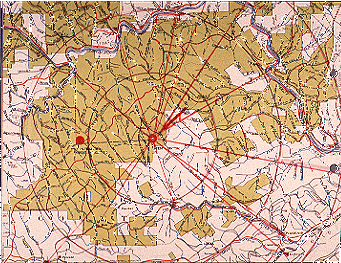
Figure 3) Project Ketch Ground Zero (manuscript planning map, Pennsylvania Department of Environmental Protection, Harrisburg PA). This map locates the proposed and alternative sites for Project Ketch (shown with the dark dot). Concentric circles are distances from the proposed site, and radiating lines point to villages, towns, and cities which surround the site.
Contact with Pennsylvania State officials began in early 1966.(note 12) AEC and Columbia Gas emphasized how Pennsylvania itself needed the blast for the sake of local economic development. In early 1967 the AEC, Columbia Gas, and Pennsylvania officials met to discuss how to present Project Ketch to the public, and they concluded that the proposal was 'closely related to straightforward economic considerations.' However, the same document notes that 'major emphasis be placed on the technical feasibility aspects rather than the economic aspects' in dealing with the public.(note 13) When the time came to present Ketch to the public, the technology, and not its possible economic benefits, would be emphasized.
From the record, Pennsylvania officials, including Governor Shafer, come across as entranced spectators. An invitation to witness an underground blast at the Nevada Test Site was proffered, and the state officials who went to Nevada declared themselves impressed, seduced by the spectacular as concocted by the AEC.(note 14) The AEC, however, was not satisfied with immersing the Pennsylvanians in the Western experimental nuclear landscape and waiting for the desired effect: state approval of Project Ketch. In a meeting with a state legal assistant, the AEC made its position and authority clear. As the assistant noted, 'The AEC desired no restrictions upon their operations ... save what they themselves would impose,' while the 'AEC ... seemed reluctant to assume any responsibility for damages' ... 'Their basic position was that they desired to proceed by themselves without any qualifications or restrictions and let the Commonwealth of Pennsylvania rely solely on their sincerity and good-will....'(note 15)
The news leak about Ketch upset this 'orderly' process. The AEC, Columbia Gas, and the State of Pennsylvania scrambled to justify the project, to maintain the social mapping of ground-zero constructed over the previous two years, along with the discourses of nuclear engineering, economic development, and marginality. The official report on Ketch, published by the AEC and Columbia Gas a few months after the newspaper leak, detailed how the existing geography of the region was ill-suited to the needs of Columbia Gas. Allegedly, there were few economically viable natural gas storage sites in areas close enough to Eastern US markets: '...underground formations suited for [natural gas] storage are not present in all parts of the United States and very few are near the gas markets.' Nuclear explosions could remedy this problem.(note 16) The report on Ketch was heavily illustrated with representations of how the geography and geology of the site could easily be modified (figure 4). Further support came from a local newspaper which argued, with impeccable logic, in favor of the blast (probably borrowing from AEC public relations materials): 'If the development of nuclear power is to benefit mankind...people must be willing to give it a try. As long as all responsible precautions are taken and as long as everything is done to prevent any undesirable effects, the layman is not in a very strong position to protest such peaceful uses of nuclear power.'(note 17)
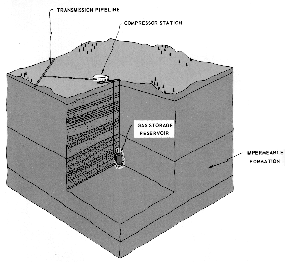
Figure 4) Ketch Storage Reservoir (Columbia Gas System et al., Project Ketch. p. 12)
Questioning the Mappings of Ground Zero and Project Ketch
When it came to nuclear blasts, many central Pennsylvanians were not sure if they wanted to 'give it a try.' Letters sent to the editors of local newspapers raised questions about the effects of the blast. When asked about the possibilities of groundwater contamination, property damage, and the escape of radiation, the AEC and Columbia Gas first issued assurances that none of these problems would occur. The Nevada office of the AEC 'would be responsible for public safety...it has conducted more than 200 underground nuclear explosions in Nevada, Mississippi, and New Mexico.'(note 18) Yet they followed these assurances with statements re-emphasizing the marginality and emptiness of the Ketch site, just in case problems should arise: the marginality of the site thus became fundamental. The AEC and Columbia Gas continually reiterated that the site was 'heavily wooded and sparsely populated,' it was 'in close proximity to the heavy gas use area and is remote enough from population centers to minimize any hazards,' and that it was a 'sparsely settled wilderness.'(note 19)
While the possibilities of nuclear explosives were being heralded, and while the Ketch site was being shaped as a negative space in which such an experiment could safely be conducted, the discourse of economic development was woven into the narrative. The AEC and Columbia Gas publicly stated that Project Ketch would itself not be economically viable, following the plan previously formulated with Pennsylvania state officials. Ketch was a test of technical feasibility - an experiment - and would impart few, if any, economic benefits to the region.(note 20) However, when local critics asked how the blast would therefore benefit central Pennsylvania, the AEC and Columbia Gas reversed the story: the project would be economically beneficial to the region, it would create permanent jobs and spur economic development, the availability of cheap natural gas would provide 'an exponential benefit' to the regional economy. The site was close to large natural gas markets in population centers of the Eastern US and thousands of similar blasts were planned for the future.(note 21) A different objection was then voiced by certain residents: they did not want economic development. If the test was successful (and they thought it would be) then this would open the region to undesirable changes: many more blasts, access roads, and pipeline development.(note 22) The AEC and Columbia Gas responded to this particular objection by yet again reversing their story: 'Ketch is too far away from heavy population centers. It is located in a remote area solely for greater safety. Other such chambers would be located much closer to heavy populated areas.'(note 23) Thus Ketch could be represented as a test site, the area was too marginal for economic development, and no further development would occur.
Questions from local critics of Ketch thus led to frenzied remappings by the AEC and Columbia Gas. The ground-zero landscape - the experimental space - was simultaneously configured as marginal and thus worthy of significant economic development, and as too marginal for economic development. It was worthy of a nuclear experiment because it was near population centers, but at the same time a nuclear blast there would be safe because it was not near population centers.
Public objections to Ketch were initially voiced by residents of the town of Renovo, 12 miles from the Ketch site. Opposition spread to the State College area, 30 miles south of the site. Letters to state officials and to local newspapers challenged the discourses developed by Ketch promoters. Some focused on the nuclear explosion itself and the discourses of nuclear engineering, doubting assurances from the AEC and Columbia Gas about the safety of the project and expressing concerns about the release of radiation, the contamination of ground water, and property damage from the blast. There was also resistance to the economic development discourse, challenging claims that jobs would be created, that the project would lead to lower gas costs, or that the explosion of a nuclear bomb would impart economic advantages for the region. And finally there were challenges to the definitions of marginality produced through the social mapping of the Ketch site.
Re-Mapping Ground-Zero and Marginality
Ground-zero could be reconfigured as anything but empty and marginal. Opponents noted that the population density of the region was ten times greater than that of areas around nuclear test sites in Nevada and New Mexico. Others noted there were three hundred hunting cabins adjacent to the site and that it was heavily used by hikers, hunters, and campers.(note 24) Indeed, from the perspective of some local residents and their own social mapping of the area, ground-zero was swarming with people and activities. Alternatively, the ground zero could be mapped into the ecological system, not as a margin but as the core and source of the abundant underground water supplies in Pennsylvania. A nuclear blast in such a central location could disrupt and contaminate this entire system.(note 25)
Ground-zero could also be re-mapped as indeed marginal, but the kind of marginal landscape that needed to be preserved rather than developed. AEC Chairman Seaborg had argued that Plowshare could help 'mankind' reshape the earth into a 'Garden of Eden' by overcoming the forces of nature.(note 26) Ketch opponents appealed to hunters, sportsmen, naturalists, and conservationists.(note 27) The Ketch Site did not need to be remade into a Garden of Eden by means of nuclear explosives - it was already such a garden. Letters to the editors of local newspapers thus reconfigured ground-zero as 'unspoiled mountain land,' 'a patch of forest untouched,' and 'an undisturbed forest reserve.'(note 28) The Ketch site was thus remapped into a different kind of marginal landscape than that produced by the AEC and Columbia Gas. An alternative discourse of marginality - of the virgin wilderness and its violation by nuclear bombs - was a powerful means by which to attack the Ketch proposal.
The Ketch site was, however, neither 'unspoiled,' 'untouched,' nor 'undisturbed.' While the alternative discourse of marginality sustained and empowered attacks on Ketch, it too depended on strategic remappings of the Ketch ground-zero. Before the 1920s much of north-central Pennsylvania had been clearcut, abandoned, and burned-over by logging companies (figure 5). The 'virgin' wilderness mapped by Ketch's opponents was in fact a product of the 1930s when young men in Civilian Conservation Corps camp S-76, a segregated 'negro' camp, restored the damaged landscape (figure 6).(note 29) This landscape, remade by poor black teenagers from Pittsburgh and Philadelphia, became the 'untouched' wilderness used to counter the discourse of empty, hole in the map marginality deployed by the AEC and Columbia Gas in order to support Project Ketch.
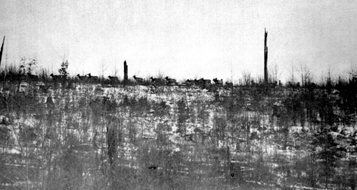
Figure 5) Near Ketch Ground Zero, ca. 1920 (photo reproduced from S. Crocco, History of Jay and Benezette Townships in Bennett's Valley, Elk County Pennsylvania, Benezette PA: Bennett's Valley News, 1966).

Figure 6) CCC Camp S-76, Renovo, PA, ca. 1936 (photo reproduced from Civilian Conservation Corps Official Annual for 1936, District No. 2, Third Corps Area, Baton Rouge LA: Direct Advertising Company, 1936, p. 112).
The counter discourses were effective: thousands of central Pennsylvanians signed anti-Ketch petitions; hundreds of letters opposing Ketch were sent to the AEC, Columbia Gas, and Pennsylvania officials. Finally, even the media and local politicians turned against the project. On July 4 1968 Columbia Gas withdrew its plan for a nuclear excavation.
Re-Mapping as 'Mystical Hostility': the Defeat of Project Ketch
Sy Orlofski, head of Columbia Gas, later reflected 'I don't know where we went wrong. We tried to sell Ketch to the people, but there was something mystical about the hostility it brought out.'(note 30) The opponents of Ketch had sensed what AEC Commissioner and Plowshare supporter Lewis Strauss had argued early in the life of Operation Plowshare, that it was meant to 'highlight the peaceful applications of nuclear explosive devices and thereby create a climate of world opinion that is more favorable to weapons development and tests.'(note 31) The political impetus for Plowshare: a shill in the Cold War and a means of comforting a public anxious about nuclear destruction, had worked its way out during the process of applying Plowshare to a particular imaginative geography, a geography that had to to be mapped into a specific location before any physical manipulation of the environment or social manipulation of 'world opinion' could take place. This social mapping and creation of an experimental space was achieved, contested, and eventually defeated discursively through word and image.
Isolated from any public involvement, scientists at the AEC had constructed a performance of the spectacular in Project Plowshare. Yet Plowshare required marginal landscapes and people if it was to be realized, and marginality proved difficult to achieve when mapped onto specific locations. The eventual defeat of Project Ketch, and the demise of Plowshare, came about in the process of contested discourses, redrawing the boundaries and the social cartographies of the AEC's proposed experimental space. Plowshare could be recast as a technological nightmare, cracking open the earth, fouling nature, and endangering human life. A line had been drawn which marginalized Plowshare itself, the AEC's vision resisted and countered by alternative mappings. Economic development could be recast as a threat to place and people, wrongly mapped as needy, deficient, and underdeveloped, who understood themselves and their place in very much the opposite way. Again, the AEC's vision was resisted and countered by alternative mappings. The discourse of marginality which rendered the Ketch site a blank, non-place could be countered by an alternative discourse of marginality, mapping the site as untouched virgin wilderness, worthy of preservation and veneration. It could even be discarded altogether in favor of a vision of the ground-zero landscape as teeming with people and activities, the hub of a vast, interconnected ecosystem, not marginal by any estimation. A line had been drawn with marginality, the AEC's vision resisted and countered by alternative mappings.
Although Project Ketch never took place in the tangible sense of an actual explosion, the Project made place - resulting in disputed constructions of landscape and people (figure 7). The story of Project Ketch reveals the struggles through which Project Plowshare was returned to the status of engineer's dreams, through public disputes focused upon social mappings of particular landscapes.

Figure 7) Gate and road to Ketch ground-zero, 1995 (photo by J.B. Krygier)
Acknowledgements
Thanks to Denis Cosgrove, Scott Kirsch, and Patricia O'Toole for insightful comments on this paper. Thanks to John Walker for assistance with the manuscript materials upon which this work is based.
Notes
note 1 Pittsburgh Press, Pittsburgh, Pennsylvania, February 14, 1967, p. 1.
note 2 Washington Post, Washington DC., July 6, 1968, p. A4.
note 3 T. Findlay, Nuclear Dynamite: The Peaceful Nuclear Explosives Fiasco (Sydney: Brassey's Australia, 1990).
note 4 W. Ley, Engineer's Dreams (New York: The Viking Press, 1959). D. Nye, American Technological Sublime (Cambridge MA: The MIT Press, 1994).
note 5 S. Kirsch. "Experiments in Progress: Edward Teller's Controversial Geographies." In this issue. D. O'Neill, The Firecracker Boys (New York: St. Martin's Press, 1994).
note 6 Centre Daily Times, State College, Pennsylvania, February 15, 1967, p. 1.
note 7 Report from R. Darrow (Columbia Gas) to M. Nordyke (Lawrence Livermore Radiation Laboratory) dated April 11, 1966 (CIC Manuscript). Manuscript memos, letters, and reports about Project Ketch are from two primary sources. The Pennsylvania Department of Environmental Protection, formerly the Pennsylvania Department of Forests and Waters, houses 2 cubic feet of materials. Documents from this source are referred to as PAFW. Other manuscript materials are from the Coordination and Information Center (Bechtel Nevada). Documents from this source are referred to as CIC.
note 8 P. Witherspoon, "Economics of Nuclear Explosives in Developing Underground Gas Storage," Lawrence Radiation Laboratory, report UCRL-14877 (July 1966).
note 9 Letter from R. Darrow (Columbia Gas) to T. Fox (Scientific Advisor to Pennsylvania Governor Shafer), dated May 6 1966, Pennsylvania Department of Environmental Protection, Harrisburg PA.
note 10 A "microworld" had been created upon which the AEC scientists, back in California, could operate. D. Livingstone, "Towards a Historical Geography of Science," Environment and Planning D: Society and Space, 13 (1995), p. 26. B. Latour, Science in Action: How to Follow Engineers and Scientists Through Society (Cambridge: Harvard University Press, 1987), B. Latour, "Drawing Things Together," in Michael Lynch and Steven Woolgar Representation in Scientific Practice (Cambridge: MIT Press, 1990), pp. 19-68.
note 11 Report from W. Moore and J. Coogan (Southwestern Radiological Health Lab) to J. McBride (Southwestern Radiological Health Lab), dated June 19, 1968 (CIC Manuscript).
note 12 Memo from J. van Zandt (Representative for Pennsylvania Governor Scranton) to Governor Scranton, dated January 10, 1966 (PAFW Manuscript). Governor Shafer took office soon after this contact.
note 13 Report from W. Underwood (Pennsylvania Department of Commerce), dated February 16, 1967 (PAFW Manuscript).
note 14 Report by E. Tarr (PA Dept. of Forests and Waters) to M. Goddard (State Secretary of PA Dept. of Forests and Waters), dated July 6, 1967 (PAFW Manuscript).
note 15 Report from W. Wilt (Legal Assistant, PA Dept. of Forests and Waters) to E. Tarr (PA Dept. of Forests and Waters), dated July 31, 1967 (PAFW Manuscript).
note 16 Columbia Gas System Service Corporation, the San Francisco Operations Office of the U.S. Atomic Energy Commission, University of California Lawrence Radiation Laboratory, and the U.S. Bureau of Mines, Project Ketch (San Francisco: no publisher, 1967).
note 17 Centre Daily Times, State College, Pennsylvania, May 24, 1967, p. 4. John Kelly (Director of the Division of Peaceful Nuclear Explosives at the AEC) met with local newspaper editors in State College, PA a few days before this editorial appeared.
note 18 Atomic Energy Commission Press Release, June 6 1967. (PAFW Manuscript)
note 19 Columbia Gas System et al., Project Ketch, p. 21. Centre Daily Times, State College, Pennsylvania, Oct. 12, 1967, p. 1, and June 9, 1967, p. 1.
note 20 Centre Daily Times,State College, Pennsylvania, February 17, 1967, p. 1, and February 19, 1967, p. 1.
note 21 This argument came to a head in a speech given by Sy Orlofski, head of Columbia Gas, on February 16, 1968 and reported in the Centre Daily Times, State College, Pennsylvania, February 17, 1968, p. 1.
note 22 Centre Daily Times, State College, Pennsylvania, September 22, 1967, p. 1.
note 23 Centre Daily Times, State College, Pennsylvania, October 31, 1967, p. 4.
note 24 Centre Daily Times, State College, Pennsylvania, March 6, 1968, p. 36.
note 25 One of many examples is a letter of protest from J. Woods to Secretary of Forests and Water Goddard, dated March 21, 1968 (PAFW Manuscript).
note 26 G. Seaborg and W. Corliss, Man and Atom (New York: Dutton, 1971), p. 174.
note 27 Centre Daily Times,State College, Pennsylvania, May 10, 1968, p. 23.
note 28 Centre Daily Times,State College, Pennsylvania, Sept 22, 1967, p. 1, February 20, 1968, p. 4, and March 6, 1968, p. 36.
note 29 The Civilian Conservation Corps is discussed in J. Salmond, The Civilian Conservation Corps, 1933-1942: A New Deal Case Study (Durham: Duke University Press, 1967). Details about CCC camps in the Ketch ground-zero region are from the Civilian Conservation Corps Official Annual for 1936, District No. 2, Third Corps Area (Baton Rouge LA: Direct Advertising Company, 1936). Camp S-76, nearest to the Ketch ground zero, was a segregated black camp.
note 30 Washington Post, Washington DC, July 6, 1968, p. A4.
note 31 Strauss quoted in R. Hewlett and F. Duncan, Atoms for Peace and War (Berkeley: University of California Press, 1989), p. 529.
E-mail: jbkrygie@cc.owu.edu